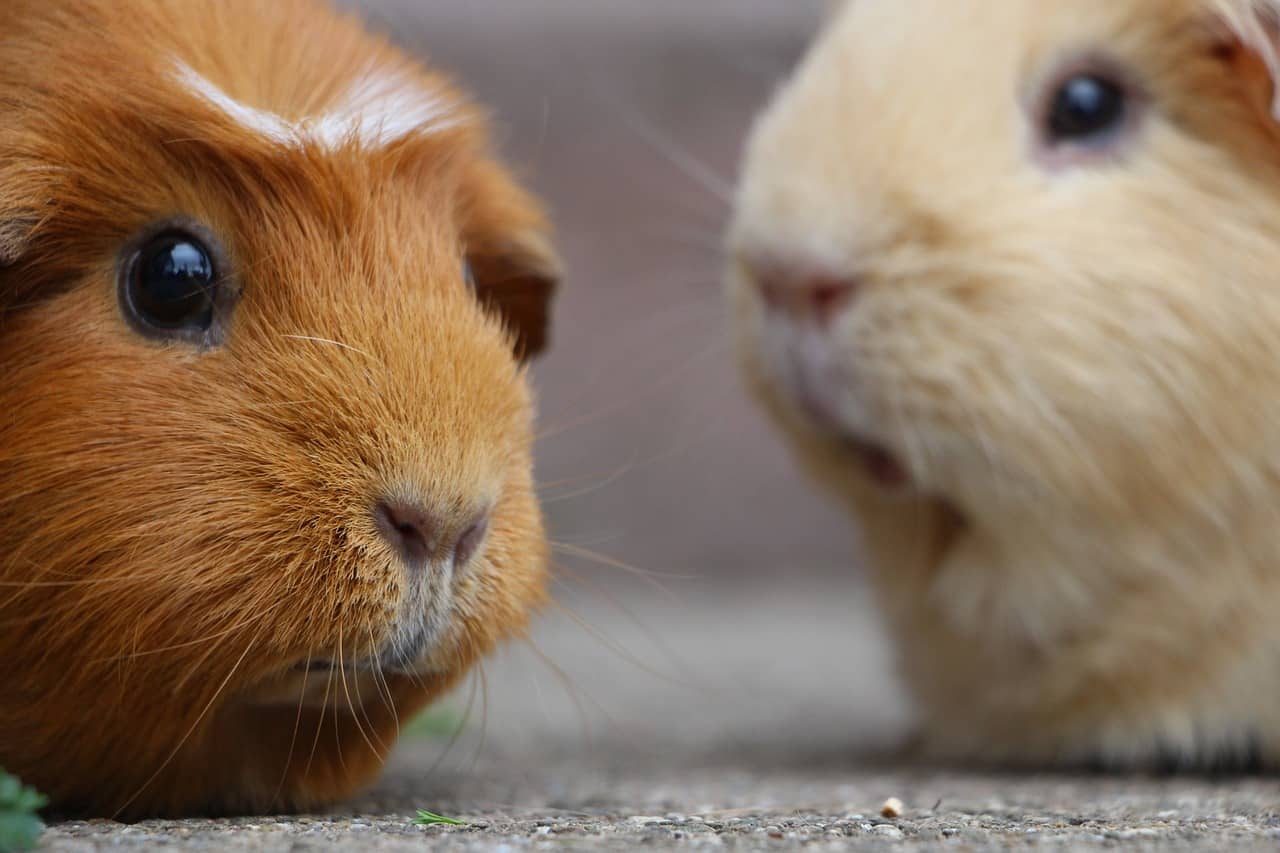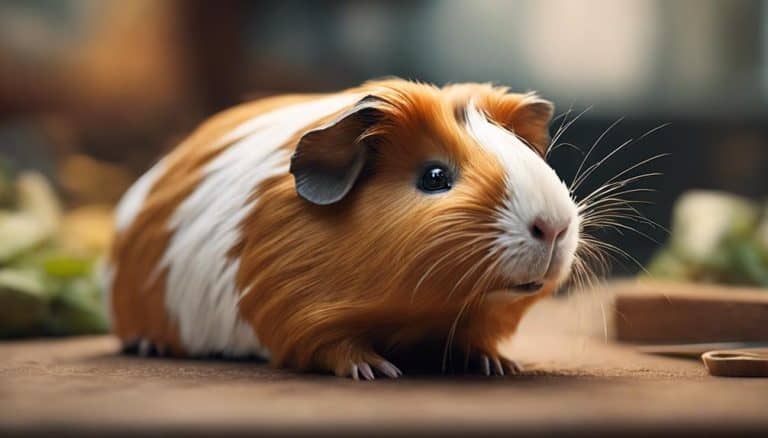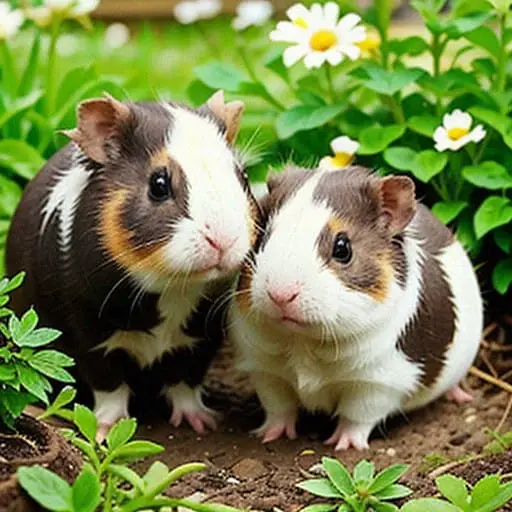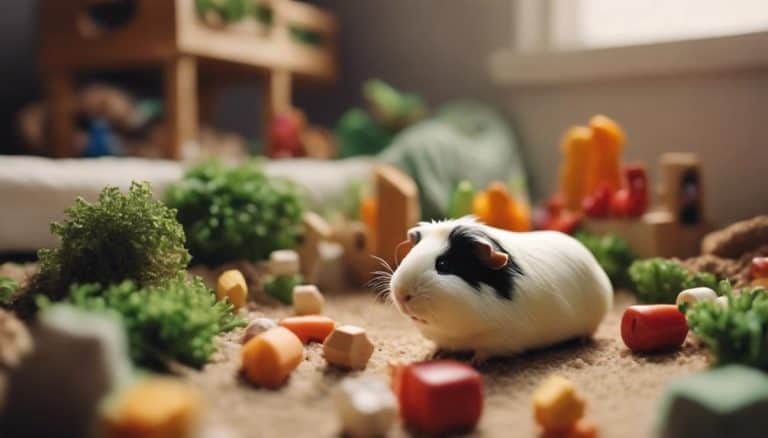Exploring the Feasibility of Keeping Guinea Pigs in an Aquarium: Practical Considerations and Expert Advice
Keeping guinea pigs as pets has become increasingly popular, with their adorable appearance and friendly nature winning the hearts of many. However, traditional cages may not always provide the optimal living environment for these small creatures. In recent years, there has been a growing interest in exploring alternative housing options for guinea pigs, with one intriguing possibility being aquariums.
This article aims to delve into the feasibility of keeping guinea pigs in an aquarium by considering practical aspects and seeking expert advice. By examining various factors such as space requirements, ventilation needs, and safety considerations, we can gain a comprehensive understanding of whether this unconventional approach is a viable choice for responsible pet owners.
Whether you are contemplating adopting a guinea pig or looking for innovative ways to enhance your furry friend’s living conditions, this article will provide valuable insights into the preparation and maintenance required when deliberating on keeping guinea pigs in an aquarium setting.
The Benefits and Drawbacks of Using an Aquarium as a Guinea Pig Habitat
Keeping guinea pigs in an aquarium can have several benefits. Firstly, aquariums provide a contained and secure environment for these small animals, reducing the risk of escape or injury. The glass walls also allow for easy visibility and interaction with the guinea pig, creating a more enjoyable pet-owning experience. Additionally, aquariums can help to keep bedding materials contained and minimize mess, making cleaning and maintenance more convenient.
However, there are also drawbacks to using an aquarium as a guinea pig habitat. One major concern is ventilation. Guinea pigs produce ammonia from their urine which can accumulate in a confined space like an aquarium without proper airflow. This could lead to respiratory problems or even ammonia poisoning if not addressed adequately. Another issue is limited space compared to traditional cages; guinea pigs require ample room for exercise and exploration, which may be challenging to achieve within the constraints of an aquarium.
In conclusion, while using an aquarium as a guinea pig habitat has certain advantages such as security and easy visibility, it also comes with potential drawbacks related to ventilation and limited space. It is crucial to take appropriate measures to ensure proper airflow within the tank and provide enough room for physical activities when considering this alternative housing option for your furry friends. Seeking advice from experts should always be prioritized when making decisions regarding pet welfare.
Setting Up an Aquarium for Guinea Pigs: Equipment and Accessories
Setting up an aquarium for guinea pigs requires specific equipment and accessories to ensure their comfort and well-being. The first essential item is a suitable-sized glass aquarium or fish tank that provides ample space for the guinea pig(s) to move around freely. It is recommended to choose one that has a minimum size of 10 square feet per pig. Additionally, the aquarium should have proper ventilation to prevent condensation build-up and maintain air circulation.
To provide a cozy living environment, bedding material such as fleece liners or cage liners should be placed on the bottom of the aquarium. These liners are easy to clean and help absorb moisture from urine that can cause odor issues. Guinea pigs also require hiding spots inside their habitat, so it is important to include tunnels or shelters where they can retreat when feeling anxious or seeking privacy.
Moreover, providing appropriate accessories in the setup enhances the enrichment factor for guinea pigs’ well-being. Accessories like toys, chew sticks made from safe materials (avoiding wood treated with chemicals), water bottles with sipper tubes attached at lower levels (to avoid neck strain), food bowls kept away from bathroom areas but easily accessible by piggies, all contribute towards creating a stimulating environment for these small animals.
Overall, setting up an aquarium for guinea pigs requires careful selection of appropriate-sized tanks with good ventilation systems alongside adequate bedding material and enriching accessories ensuring optimal living conditions conducive to their health and happiness.
Maintaining a Healthy Environment: Temperature, Humidity, and Ventilation in an Aquarium
Maintaining a healthy environment in an aquarium is crucial for the well-being of guinea pigs. One key aspect to consider is temperature. Guinea pigs are sensitive to extreme temperatures, and it is essential to provide a comfortable and consistent range within the tank. The ideal temperature for these pets ranges from 65-75 degrees Fahrenheit (18-24 degrees Celsius). It is important to monitor the temperature regularly, especially during hot summers or cold winters, by using thermometers or heating devices if necessary.
Another vital factor in maintaining a healthy environment for guinea pigs in an aquarium is humidity levels. These small creatures thrive in environments with moderate humidity levels between 30-60%. Higher levels can lead to respiratory issues and mold growth, while excessively low humidity can cause dry skin problems. Regularly measuring the humidity inside the tank will help ensure that it stays within this recommended range.
Ventilation plays an equally significant role in keeping a healthy environment inside the aquarium. Proper airflow prevents any buildup of stale air or foul odors that could be harmful to guinea pigs’ health. Providing sufficient ventilation can be achieved through various means such as strategically placed fans or ensuring appropriate spacing between lid covers or mesh tops on the tank’s enclosure.
By maintaining suitable temperatures, optimal humidity levels, and adequate ventilation within an aquarium housing system, owners can create a safe and comfortable living space for their beloved guinea pigs. Regular monitoring of these factors along with consulting expert advice will further contribute towards providing these adorable pets with an ideal habitat where they can thrive happily.
Expert Advice on Transitioning Guinea Pigs to an Aquarium: Tips and Considerations
Keeping guinea pigs as pets has surged in popularity due to their charming looks and sociable nature. While traditional cages are commonly used, some pet owners are considering alternative housing options like aquariums for these small animals. In order to determine the feasibility of using an aquarium, it is important to consider practical aspects and seek expert advice. This article aims to explore different factors such as space requirements and potential challenges associated with transitioning guinea pigs to an aquarium.
Switching from a cage to an aquarium requires careful consideration of several factors. One important aspect is ensuring that the aquarium provides enough space for the guinea pig’s comfort and mobility. Additionally, proper ventilation must be maintained inside the enclosure to ensure good air quality for these small creatures. Other considerations include providing suitable bedding and nesting materials, maintaining appropriate temperature levels, and ensuring access to fresh food and water sources.
Expert advice can prove invaluable when considering a transition for guinea pigs from a cage to an aquarium. Consulting with veterinarians who specialize in exotic pets or experienced guinea pig owners can provide unique insights into the benefits and challenges associated with this housing option. Their expertise can help address any concerns regarding adequate space, bedding requirements, ventilation needs, potential health risks, and recommended adjustments during this transition process.
In conclusion, exploring alternative housing options such as using an aquarium for your guinea pig requires careful evaluation of various practical aspects along with seeking guidance from experts in this field. By considering factors like space requirements, ventilation needs, bedding materials, temperature control measures, food accessibility solutions among others; it becomes possible to create a comfortable living environment for these adorable small companions while looking after their well-being effectively.






